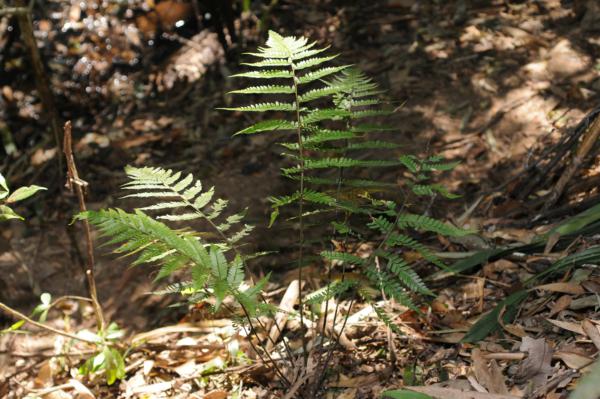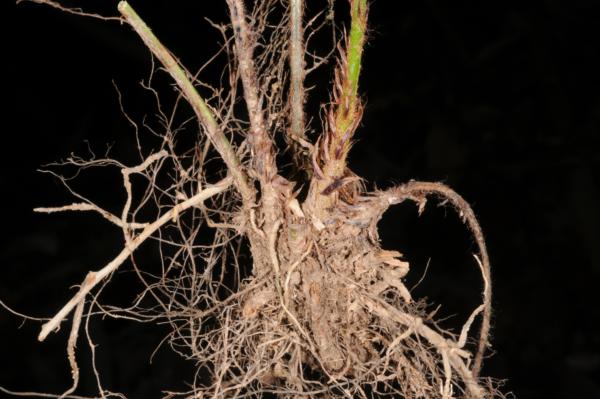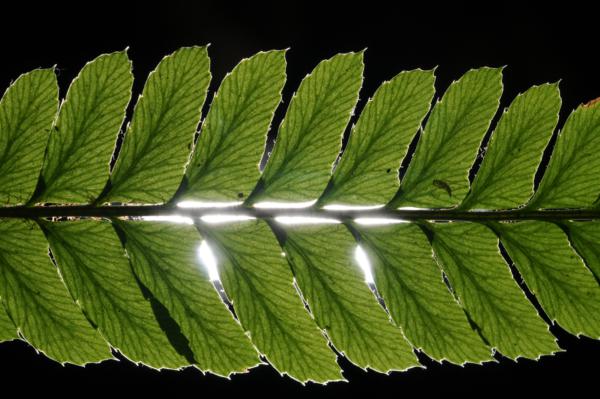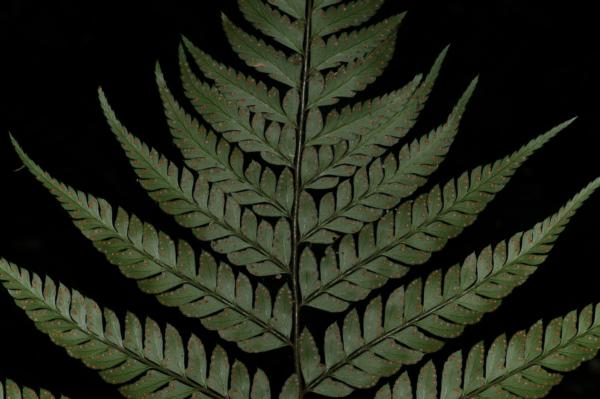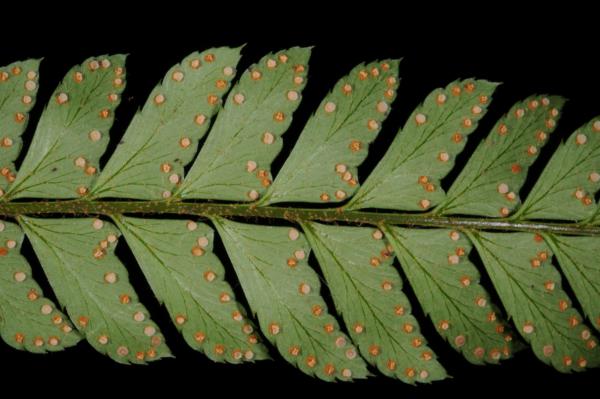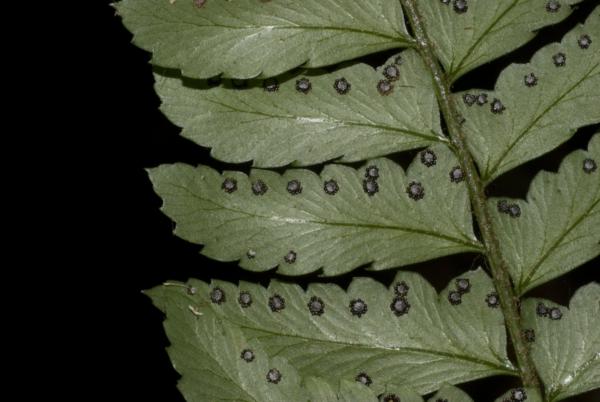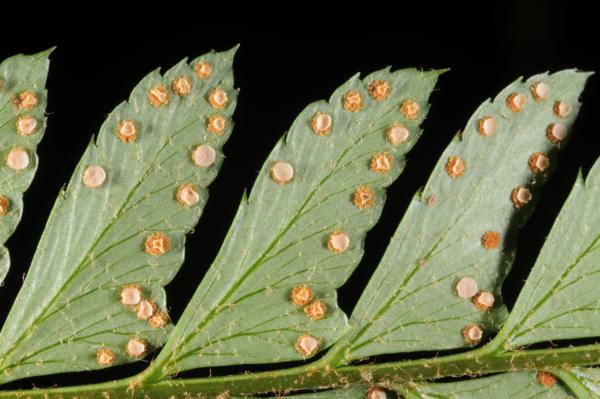
Polystichum biaristatum (Blume) T.Moore
Family
Dryopteridaceae
Nomenclature
Polystichum biaristatum (Blume) T.Moore, Index Filic.: 86. 1858; Tardieu & C.Chr., Fl. Indo-Chine 7(2): 342. 1941; Holttum, Dansk Bot. Ark. 23: 238. 1965; Tagawa & K.Iwats., SouthE. Asian Stud. 3(3): 86. 1965; Tagawa & K.Iwats., SouthE. Asian Stud. 5: 94. 1967; Tagawa & K.Iwats., Fl. Thailand 3: 337, f. 29.10 & 29.11. 1988; Boonkerd & Pollawatn, Pterid. Thailand: 161, 208. 2000. – Aspidium biaristatum Blume, Enum. Pl. Javae 164. 1828. – Polystichum aculeatum var. biaristatum (Blume) Bedd., Handb. Ferns Brit. India: 209. 1883.
Aspidium aculeatum auct. non (L.) Sw.: Hoss., Beih. Bot. Centralbl. 28(2): 363. 1911. – Polystichum aculeatum auct. non (L.) Schott: Holttum, Dansk Bot. Ark. 20: 30. 1961.
Description
Rhizome short, suberect; scales narrowly subtriangular, attenuate at apex, entire at margin, up to 25 by 4 mm, bicoloured, central portion shining black and tough, the margin brown to dark brown with ferrugineous margin. Stipes 30–40 cm long; scales at base of two kinds, one like those on rhizome, the other narrower, linear, up to 1 cm long, brown, toothed at margin, those on upper part linear, black with brown broader base. Laminae oblong-lanceolate, widest at middle, slightly narrowing towards base, acuminate at apex, 40–50 by 25–30 cm; rachis densely scaly throughout with linear black scales with brown broader base; pinnae more than 15 pairs, lower pinnae patent or slightly ascending, very shortly stalked, lanceolate, gradually acuminate at apex, broadly cuneate or subtruncate at base, up to 15 by 3 cm; basal acroscopic pinnules larger; pinnules rather close, oblong or gradually narrowing towards apex, falcate, acute and ending in sharp awns at apex, sessile, 15–20 by 5–8 mm, shallowly lobed at margin; veinlets a little raised on lower surface, minutely scaly; coriaceous, green. Sori arranged in one row at submarginal or medial part of pinnules; indusia pale brown, about 1 mm diam.
Distribution in Thailand
NORTHERN: Chiang Mai, Chiang Rai, Tak; NORTH-EASTERN: Loei; SOUTH-WESTERN: Kanchanaburi; SOUTH-EASTERN: Prachin Buri, Chanthaburi; PENINSULAR: Ranong.
Wider Distribution
Sri Lanka, N India, S China, Taiwan and Java.
Ecology
On humus-rich floor of dense evergreen forests at 900–1400 m alt.
Proposed IUCN Conservation Assessment
Least Concern (LC). This species is widespread and not under any known threat.
Voucher specimens - Thailand
Middleton et al. 4739, Kanchanaburi, Lam Khlong Ngu National Park (E).
Habit
Rhizome
Venation
Lower surface of lamina
Lower surface of pinna with fertile pinnules
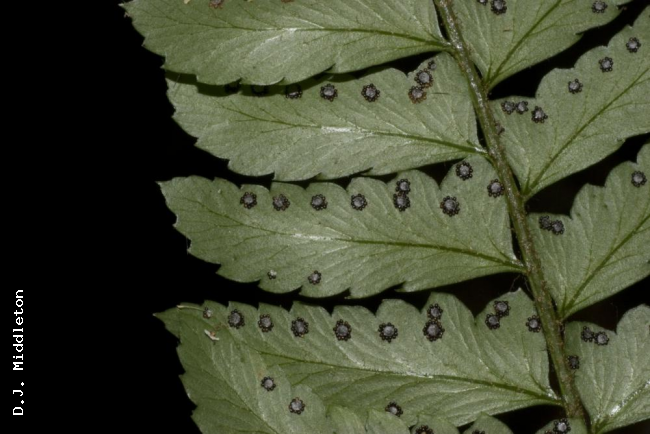
Pinnule
Pinnules
Site hosted by the Royal Botanic Garden Edinburgh. Content managed by Stuart Lindsay, Gardens by the Bay, Singapore and David Middleton, Singapore Botanic Gardens. Last updated 24 January 2012
